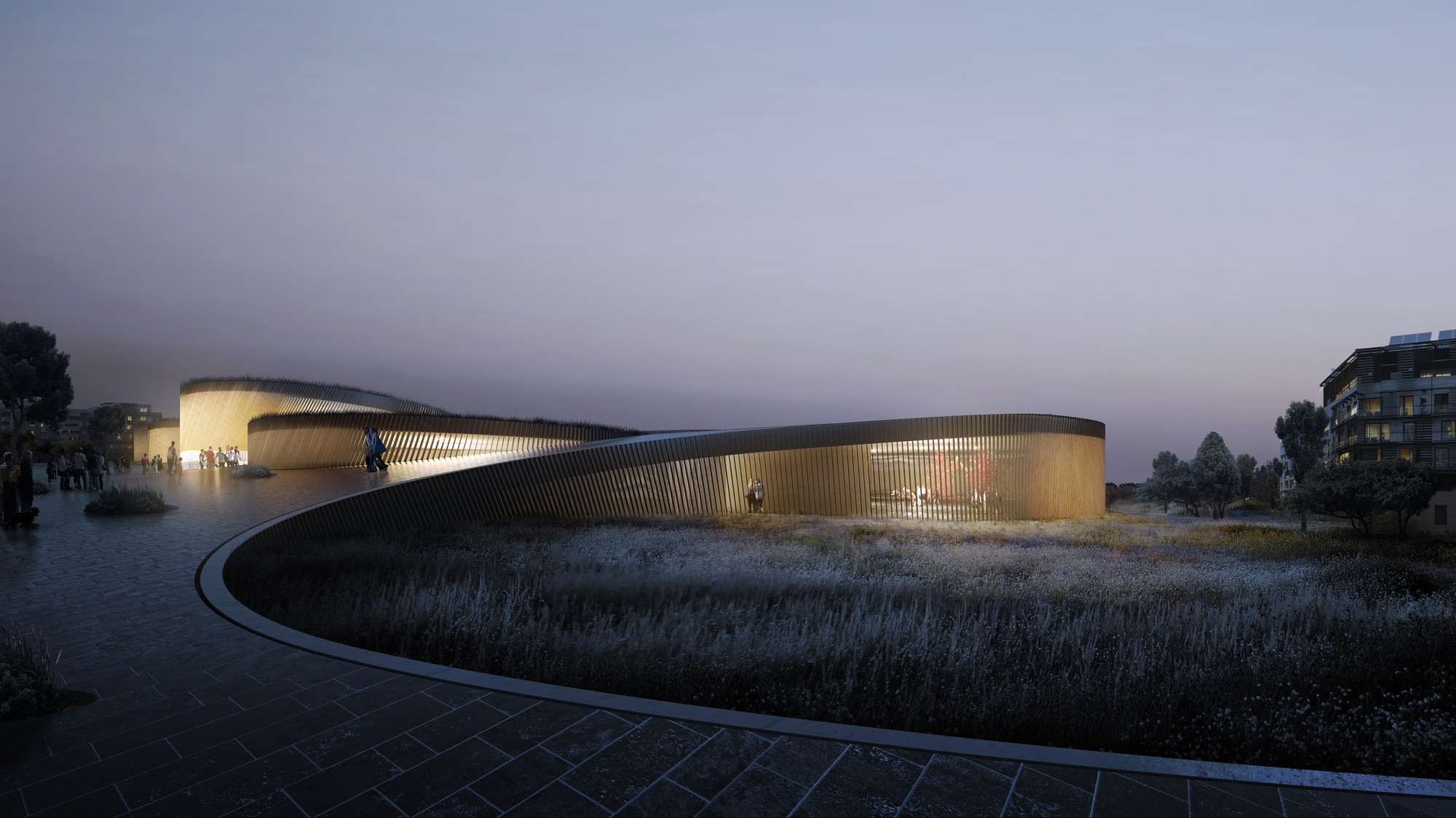
BIG has been announced as the winner of an international design competition for the new Cité du Corps Humain (Museum of the Human Body) in Montpellier. Rooted in the city’s long medical history and world renowned medical school, which dates back to the 10th century, the 7,800 sqm museum will “explore the human body from an artistic, scientific and societal approach through cultural activities, interactive exhibitions, performances and workshops.”
It’s design, orchestrated by eight undulating forms which “weave together” to create an underlying continuous space, will serve as a mediator between nature and city - Charpak Park and the Montpellier city hall. Stunning views, access to daylight and critical internal connections will all be revealed by the Museum’s shifting form.
Read on for more from the architect...


“Like the mixture of two incompatible substances – oil and vinegar – the urban pavement and the parks turf flow together in a mutual embrace forming terraced pockets overlooking the park and elevating islands of nature above the city. A series of seemingly singular pavilions that weave together to form a unified institution – like individual fingers united together in a mutual grip,” explains Bjarke Ingels.

The museum’s roof functions as an ergonomic garden – a dynamic landscape of vegetal and mineral surfaces that allow the park’s visitors to explore and express their bodies in various ways – from contemplation to the performance – from relaxing to exercising – from the soothing to the challenging.

The façades of the Museum of the Human Body are transparent, maximizing the visual and physical connection to the surroundings. On the sinuous façade that oscillates between facing North and South, East and West, the optimum louver orientation varies constantly, protecting sunlight, while also resembling the patterns of a human fingerprint – both unique and universal in nature.

The jury, headed by the City’s Mayor Ms Hélène Mandroux, chose BIG over 5 other shortlisted international teams and praised BIG’s design for combining innovative, environmental and functional qualities. The new Museum will contribute to Montpellier’s rich scientific and cultural heritage, attracting tourists, families, as well as school classes, academics and art lovers.
Construction is scheduled to start in 2016, and the building will open its doors to the public in 2018.
Architects
Partners in Charge
Bjarke Ingels, Andreas Klok PedersenProject Leader
Gabrielle NadeauProject Manager
Jakob SandTeam
Birk Daugaard, Chris Falla, Alexandra Lukianova, Oscar Abrahamsson, Katerina Joannides, Aleksander Wadas, Marie Lançon, Danae Charatsi, Alexander EjsingClient
Ville de MontpellierLocal Architect
A+ ArchitectureStructural + MEP Engineers
Egis Bâtiment MéditerranéeLandscape Architect
BaseFinancial Consultant
L'EchoSustainability Consultant
Celsius EnvironnementAcoustic Consultant
Cabinet Conseil Vincent HedonArea
7800.0 sqmProject Year
2018Photographs
Courtesy of BIG, Courtesy of BIG + MIR


































